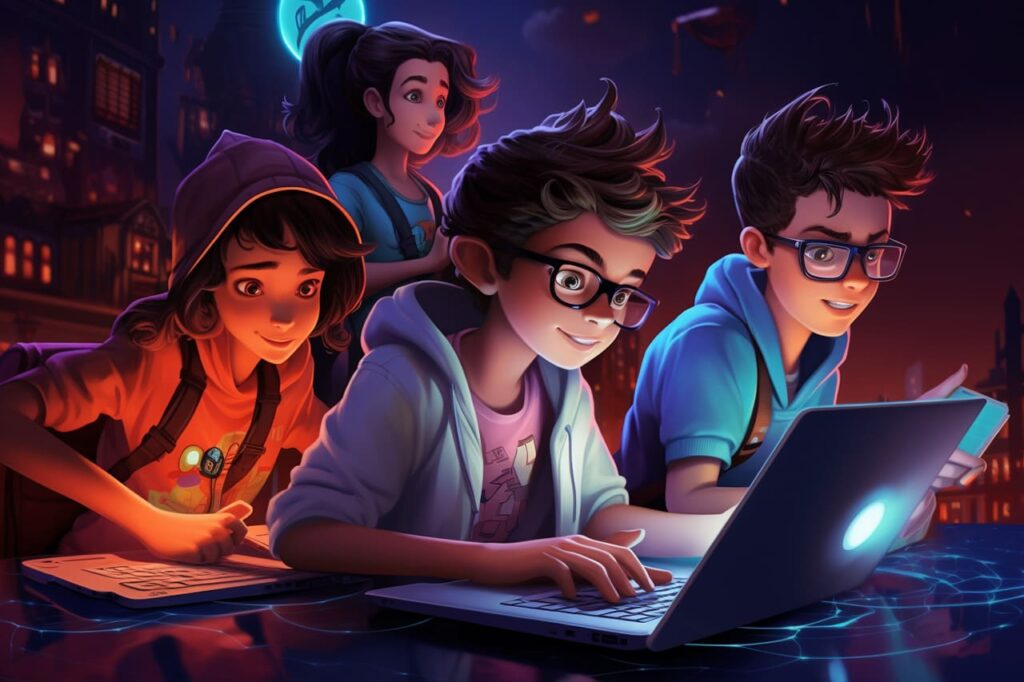Video games have been around for decades and have since become a billion-dollar industry. These virtual worlds have grown in complexity, technology, and popularity. More than just entertainment, video games have been incorporated into education and are beginning to revolutionize the way we learn. In this article, we will explore the ways in which video games are being used in the classroom, and how they can enhance the learning experience.
The Benefits of Video Games in Education
Video games offer a unique set of benefits that traditional methods of teaching don’t provide. One of the main advantages of video games is their ability to engage students. Games are designed to be fun and interactive, which means that students are more likely to stay engaged and interested. By playing video games, students can develop problem-solving skills, critical thinking, creativity, and collaboration.
Additionally, video games can provide immediate feedback. When playing games, students receive instant feedback on their performance. This means that they can learn from their mistakes and adjust their strategy accordingly. Instant feedback is crucial for effective learning, as it helps students to identify their strengths and weaknesses.
Video games also allow for personalized learning. Different students learn at different rates and have different learning styles. Video games can be customized to meet the needs of individual learners, ensuring that everyone can learn at their own pace and in their own way.
Using Video Games in the Classroom
Video games have been used in the classroom for several years now, with great success. Many schools and universities have incorporated video games into their curriculum, using them to teach a range of subjects, including math, science, history, and language arts.
One example of a successful video game used in education is Minecraft. Minecraft is a game that allows players to build and explore virtual worlds. It has been used in classrooms around the world to teach everything from geometry to history. Minecraft is especially effective at teaching spatial reasoning, as players must navigate a 3D world and build structures using blocks.
Another example of a successful educational video game is The Oregon Trail. The Oregon Trail is a game that simulates the journey of settlers traveling from Missouri to Oregon in the mid-1800s. The game teaches history, geography, and critical thinking, as players must make decisions about supplies, route planning, and survival.
Video games can also be used to teach coding and computer science. Games like CodeCombat and Lightbot teach coding concepts in a fun and interactive way, allowing students to learn by doing.
The Future of Video Games in Education
As technology continues to advance, the possibilities for video games in education are endless. Virtual reality and augmented reality are two areas that have a lot of potential for education. Virtual reality can transport students to different parts of the world, allowing them to experience different cultures and environments. Augmented reality can provide interactive experiences, overlaying digital information onto the real world.
Another area that has a lot of potential is gamification. Gamification is the use of game design elements in non-game contexts. For example, a teacher might create a leaderboard for a class, where students can earn points for completing assignments and participating in class discussions. Gamification can make learning more engaging and motivating, and can help students to stay on track and achieve their goals.
The Downsides of Video Games in Education
While there are many benefits to using video games in education, there are also some potential downsides. One concern is that video games can be a distraction. Students might be tempted to play games instead of paying attention to the lesson. Additionally, video games can be addictive, and students might become so engrossed in the game that they lose track of time.
Another concern is that video games can be expensive. Many educational video games require specialized equipment or software, which can be costly
. Schools and universities may not have the budget to invest in this technology, which could limit the use of video games in education.
Finally, there are concerns about the content of video games. Not all video games are appropriate for children, and some may contain violent or sexual content. It is important for educators to carefully vet the games they use in the classroom to ensure that they are age-appropriate and align with the values of the school.
Conclusion
Video games have come a long way since the days of Pong and Space Invaders. They have become a sophisticated and engaging form of entertainment and have even been incorporated into education. By leveraging the unique benefits of video games, educators can engage students, provide immediate feedback, and allow for personalized learning. As technology advances, the possibilities for video games in education are endless.
While there are potential downsides to using video games in education, the benefits far outweigh the risks. As long as educators carefully vet the games they use in the classroom and ensure that they are appropriate and align with the values of the school, video games can be an effective and engaging tool for learning.

